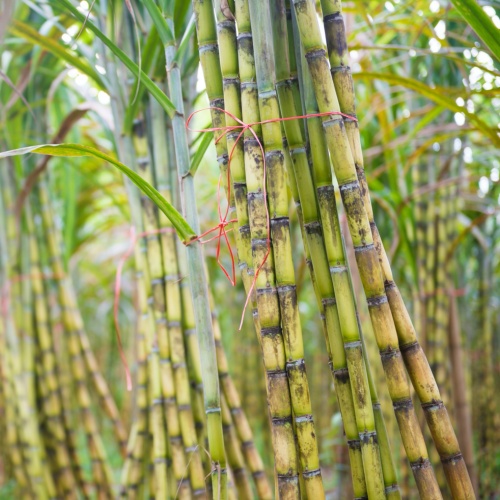A Thorough Guide to the Ecological Influence and Sustainability Practices in Walking Stick Sugar Processing
The ecological effect of walking cane sugar handling presents a complex range of challenges that warrant mindful examination. From dirt degradation and excessive water use to the carbon impact related to cultivation and production, the consequences of traditional methods are significant. On the other hand, the adoption of innovative sustainability actions supplies a path toward a lot more accountable production methods. Comprehending the interplay between these issues is critical for stakeholders in the industry. What certain techniques can be applied to strike an equilibrium between productivity and ecological stewardship? The answers depend on a closer check out both the obstacles and possible remedies.
Overview of Walking Cane Sugar Handling
Walking stick sugar processing includes a series of methodical actions that change sugarcane into polished sugar. At first, gathered sugarcane is delivered to refining facilities, where it undertakes cleansing to remove dirt and particles. Following this, the walking cane is squashed to extract juice, which is after that made clear by eliminating contaminations through heating and the addition of lime.
The clarified juice undergoes evaporation, where water is gotten rid of to concentrate the sugar material. This concentrated syrup is after that crystallized through air conditioning, allowing sugar crystals to create. These crystals are divided from the staying syrup utilizing centrifugation, causing raw sugar. To accomplish refined sugar, the raw item undertakes further filtration procedures, which might include cleaning and filtering to remove continuing to be impurities and color.
The end product is after that dried and packaged for distribution. Throughout this whole process, keeping effectiveness and quality assurance is necessary to make certain the sugar fulfills sector criteria. Each action in walking stick sugar handling not only contributes to the end product but additionally has effects for resource usage and waste generation, setting the stage for conversations on sustainability and ecological effects connected with sugar production.
Environmental Challenges of Production
The production of cane sugar offers several substantial environmental obstacles that warrant focus. One main concern is the extensive use agrochemicals, including chemicals and fertilizers, which can lead to dirt degradation, biodiversity loss, and contamination of regional water sources. The runoff from sugarcane areas commonly lugs these chemicals right into neighboring ecological communities, interfering with water life and affecting the health and wellness of neighborhoods reliant on these water bodies.
One more obstacle is the high energy usage connected with sugarcane handling. The boiling and refining phases require significant warmth, mostly produced by burning fossil fuels, contributing to greenhouse gas discharges. Furthermore, the large land location required for sugarcane growing can bring about deforestation and habitat damage, further exacerbating environment change and threatening wildlife.
Furthermore, the labor practices in some regions increase moral worries, as workers might face poor working conditions and insufficient salaries. This situation usually perpetuates a cycle of poverty in regional communities. Cane Sugar Processing. Resolving these environmental difficulties is critical for creating extra lasting practices in walking stick sugar production, eventually profiting both the setting and the areas involved in this sector
Water and Land Usage Impact
Water resources and land usage are vital parts in the cane sugar sector that considerably influence the atmosphere. The farming of sugarcane needs substantial water input, with price quotes recommending that it can consume as much as 2,000 liters of water per kilogram of sugar created. This intensive use water typically brings about exhaustion of neighborhood water sources, influencing not just the sugarcane haciendas but additionally surrounding ecological communities and areas that depend on the very same water sources for agriculture and residential usage.

Furthermore, land usage for sugarcane growing can lead to logging and the conversion of all-natural environments right into monoculture plantations. This technique diminishes biodiversity, interrupts regional environments, and adds to dirt destruction. The development of sugarcane fields usually encroaches on valuable agricultural land, developing competitors for sources between food and biofuel manufacturing.
Lasting methods, such as enhancing irrigation methods and applying crop rotation, are necessary to alleviate these influences. By embracing much more reliable water use and land management approaches, the walking cane sugar industry can minimize its eco-friendly impact, ensuring a balance between farming performance and ecological conservation.
Greenhouse Gas Emissions
Greenhouse gas emissions stand for a substantial environmental concern within the cane sugar processing industry, especially as agricultural practices increase to satisfy international demand. The cultivation of sugarcane, a Check This Out crop that grows in tropical climates, depends heavily on artificial fertilizers and chemicals, which contribute to nitrous oxide discharges. In addition, land-use changes, consisting of logging for new sugarcane plantations, release co2 saved in plant life and soil.
Throughout processing, energy usage is one more major resource of greenhouse gas emissions - Cane Sugar Processing. Numerous sugar mills make use of nonrenewable fuel sources to power machinery and generate heat, leading to significant carbon impacts. Furthermore, the transportation of raw sugarcane and finished products adds layers of emissions with fuel combustion in cars
This entails examining present agricultural practices, refining approaches, and transportation systems to identify locations for enhancement and reduction. Resolving greenhouse gas emissions is essential for promoting a much more lasting walking cane sugar industry in an altering environment.

Sustainable Practices and Innovations
Lasting techniques and developments are significantly vital in the walking cane sugar processing sector as stakeholders seek to reduce environmental influences while keeping productivity. One significant advancement is the implementation of incorporated crop administration, which maximizes source use by integrating soil administration, parasite control, and crop turning techniques. This strategy boosts return while lessening chemical inputs and maintaining dirt wellness.
Additionally, the fostering of renewable resource sources, such as biomass from sugarcane residues, has gotten grip - Cane Sugar Processing. By converting waste products right into power, processing facilities can minimize their reliance on nonrenewable fuel sources, thus decreasing greenhouse gas exhausts
Water monitoring practices have also seen renovations via the recycling and reusing of water in processing plants, considerably decreasing freshwater consumption. Advancements in technology, such as accuracy agriculture, enable farmers to keep track of plant wellness and source usage more why not find out more properly, guaranteeing lasting farming practices.
Moreover, certification look at this site programs like Fair Trade and Rainforest Alliance encourage environmentally responsible farming methods and advertise social equity within the supply chain. By accepting these lasting methods and developments, the walking cane sugar handling industry can boost its resilience and add favorably to ecological stewardship.
Final Thought
The ecological impact of cane sugar handling provides considerable challenges, consisting of dirt destruction, high water intake, and greenhouse gas exhausts, along with moral worries associated with labor techniques. Dealing with these concerns with lasting techniques, such as incorporated crop monitoring, renewable resource fostering, and water recycling, is vital. By advertising ecologically responsible and socially fair approaches in sugar production, the sector can reduce its adverse results, ensuring a much more sustainable future for both ecosystems and areas included in this industry.
Cane sugar handling includes a series of systematic steps that change sugarcane into polished sugar. Each step in walking stick sugar handling not only adds to the last item however likewise has ramifications for source use and waste generation, setting the phase for discussions on sustainability and environmental impacts linked with sugar production.
Greenhouse gas emissions represent a substantial ecological problem within the walking stick sugar handling market, specifically as agricultural methods broaden to fulfill global demand.Sustainable practices and advancements are progressively crucial in the walking cane sugar handling market as stakeholders seek to lower ecological effects while keeping efficiency.The environmental effect of walking cane sugar handling provides significant difficulties, including soil destruction, high water usage, and greenhouse gas exhausts, alongside ethical concerns associated to labor practices.